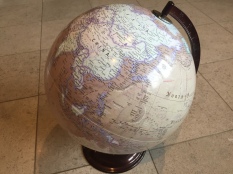 Learning the names of nationalities in English is challenge...even for an ESL teacher. I just spent considerable time trying to learn what someone in Northern Ireland might be called!
Learning the names of nationalities in English is challenge...even for an ESL teacher. I just spent considerable time trying to learn what someone in Northern Ireland might be called!
A while back, I offered some practice with geography and nationalities. (See post from 2013.) The topic is still in demand, and so I'm back with more tips and ideas.
First, the tips for students:
- Learn the names you'll need to use the most. What's your nationality? What are the nationalities of the people in your life and the people you have contact with?
- Pay attention to the influence of geography, but know there are exceptions. Yes, many Asian countries end in -ese, but then we have adjective forms like Portuguese and Korean.
- Look for patterns and learn them. It's a good guess that a country ending in -a will use -an in the nationality. For example, people from Russia are Russian, so people from Croatia must be...Croatian.
- When in doubt, use a dictionary or use alternative wording. There are quite a number of patterns, and native speakers mix them up, too. Do we call someone Nepali or Nepalese? To be careful, we might opt to say, "My new neighbor is from Nepal."
- Find a good reference and know where to find it. Next Generation Grammar 3 has a sizable list of nationalities in the appendix. (I used it to write the handout.)
For classroom ideas, please consider my Globetrotters_handout.
 Learning the names of nationalities in English is challenge...even for an ESL teacher. I just spent considerable time trying to learn what someone in Northern Ireland might be called!
Learning the names of nationalities in English is challenge...even for an ESL teacher. I just spent considerable time trying to learn what someone in Northern Ireland might be called!
No comments:
Post a Comment